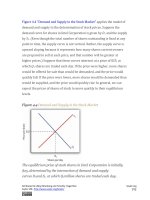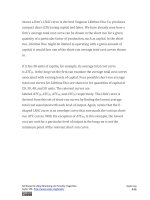Authors libby rittenberg 149
Bạn đang xem bản rút gọn của tài liệu. Xem và tải ngay bản đầy đủ của tài liệu tại đây (290.91 KB, 1 trang )
$200 a ton. That really hurt, because feed represents a large part of the
cost of producing eggs.”
The monks adjusted to the blow. “When grain prices were lower, we’d pull
a hen off for a few weeks to molt, then return her to laying. After grain
prices went up, it was 12 months of laying and into the soup pot,” Father
Joseph says.
Grain prices continued to rise in the 1980s and increased the costs of
production for all egg producers. It caused the supply of eggs to fall.
Demand fell at the same time, as Americans worried about the cholesterol
in eggs. Times got tougher in the egg business.
“We were still making money in the financial sense,” Father Joseph says.
“But we tried an experiment in 1985 producing cookies, and it was a
success. We finally decided that devoting our time and energy to the
cookies would pay off better than the egg business, so we quit the egg
business in 1986.”
The mail-order cookie business was good to the monks. They sold 200,000
ounces of Monastery Cookies in 1987.
By 1998, however, they had limited their production of cookies, selling
only locally and to gift shops. Since 2000, they have switched to “providing
private retreats for individuals and groups—about 40 people per month,”
according to Brother Charles.
Attributed to Libby Rittenberg and Timothy Tregarthen
Saylor URL: />
Saylor.org
149









